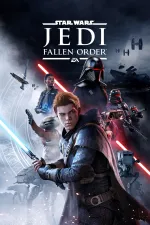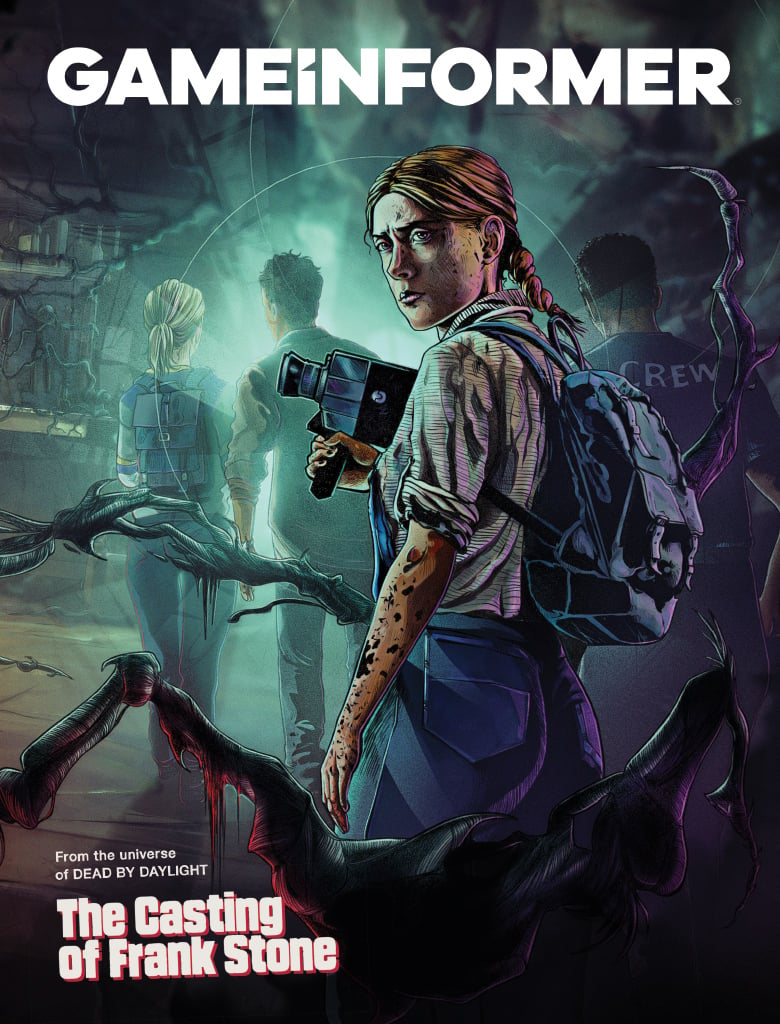Our extra-large special edition is here. Subscribe today and receive the 25% longer issue at no extra cost!
THE
TRUE
POWER
OF
THE
FORCE
The True Power Of The Force
On May 25, 1977, Star Wars opened in cinemas and introduced us to a distant galaxy filled with wizards wielding light swords, space stations the size of moons, and more aliens and robots than scientists could possibly study in a lifetime. It was the pinnacle of science-fiction escapism that also touched us with a story filled with relatable characters we couldn’t help but root for. A good number of theatergoers who were there on day one never came back from that magical outing – they were transformed into fans for life.
After 40 years of cinematic magic, Star Wars’ stories are proving to be timeless. The big revelations and heartfelt moments from these films still resonate today and have become generational. Some of us grew up fearing the wrath of Darth Vader. The next generation got to know him as a young pod-racing star named Anakin Skywalker. And Vader is merely a legend for the newest batch of fans.
Story is everything for Star Wars, but that hasn’t been the case for most video games based on this property. Since Star Wars’ inception, game developers have latched on to the clashing of lightsabers and hails of laser fire, not the mythology or stories. Sure, we grew quite fond of Kyle Katarn in the Dark Forces series, and were blown away by Darth Revan’s secrets in Knights of the Old Republic, but most Star Wars games are defined by their action and battles. Even Force Unleashed’s Starkiller, who was conflicted between the light and dark, ended up as a gray enigma and mostly a tool of destruction on the battlefield. Focusing on action is the right thing to do for interactive entertainment, but why haven’t we seen a game deliver everything that makes Star Wars tick? Why can’t a meaningful story be just as prominent as the action? KOTOR delivered story, but not the action or cinematic finesse. Despite dozens of attempts across 36 years, no game has successfully blended all of the Star Wars elements together.
That’s precisely what Respawn Entertainment could achieve with Jedi: Fallen Order, a single-player game that weaves almost everything we’ve come to love about Star Wars into the framework of a sprawling adventure. From the coming-of-age story of a down-on-his-luck character to how the orchestrated score becomes playful for a humorous moment, the ebb and flow of what we love about Star Wars appears to be strong in this game.
I spent two days at Respawn’s Los Angeles studio playing the game and discussing its design with the development team. In my play session and the footage that was shown to me, the spirit of the Star Wars movies is front and center – a driving force that delivers a continual sense of awe in its visuals and sound. At the same time, the Star Wars appeal doesn’t steal away from the gameplay and adventure, which are both equally exciting in ways I didn’t expect. Although Electronic Arts’ marketing teases the message “don’t stand out” for a game about a Jedi on the run, it isn’t a stealth game, and the player won’t be forced to duck into shadows or sneak behind enemies.
The lightsaber ends up doing most of the talking in Jedi: Fallen Order, but it isn’t used in the way you would think. You won’t be swinging it wildly at swarms of enemies, or even in lengthy combo sequences against just one enemy. The team’s vision for the lightsaber action stems from the words “thoughtful combat,” which equates to the player strategizing and looking for openings where the saber can be the most lethal. In a way, the combat dance is reminiscent of From Software’s Souls games, but not in a punishing way. Respawn wants players to succeed, but not without a little effort. The Force is also used to augment combat, allowing the player to mess with enemies in satisfying, clever, and powerful ways.
When the saber is sheathed, Respawn’s vision for the adventure has classic gaming roots and is inspired heavily by the Metroid series, pushing players to freely explore worlds, and come back to them later with new powers that can be used to reach different areas. Never once do players see a waypoint on the screen telling them where their next objective is. Respawn doesn’t want to hold your hand, and instead hopes you plot your own path through dangerous worlds that are teeming with just as much hostile wildlife as heavily armed Imperial Forces.
Hope in the Darkness
Set years after the events of Revenge of the Sith, Jedi: Fallen Order gives us an intimate look at one of the galaxy’s darkest periods in which the Jedi are being hunted and slaughtered. We see this culling through the eyes of a mysterious padawan learner who is on the run and desperate to find his place in the galaxy, perhaps as the next great Jedi Knight who can revive the Jedi order.
The game begins on the planet Bracca, a Mid-Rim world the Empire uses as a shipyard where derelict starships are dismantled and harvested for parts. “They’re tearing down these old Republic vessels, which is symbolic to the Fallen Order,” says Stig Asmussen, Jedi: Fallen Order’s director, who also directed God of War 3.
One of the low-level workers of the Empire’s dangerous operation is a human named Cal Kestis, a padawan in hiding doing his best to blend with society and not get noticed. During the heart of the Clone Wars, Cal was learning the ways of the Force. Asmussen says he may have gone on a few missions, but he wasn’t sent out by the Order like Anakin and Obi-Wan to deal with major issues. In the aftermath of Chancellor Palpatine’s Order 66 (which decrees all Jedi are enemies of the Republic), Cal’s entire life was turned upside down, and he had to abandon everything he knew, turning from a purveyor of hope to an enemy of the state.
Respawn doesn’t want to say much about Cal or his history, implying he could be someone significant. But unlike Rey’s origin story in The Force Awakens, which created more questions than answers, Cal’s origin is revealed as the game unfolds. Players won’t be left hanging waiting for a sequel to fill in the gaps.
These revelations aren’t delivered in flashbacks, but instead are learned as the game moves forward; Respawn wants to deliver as much story as possible in real-time as the player still controls Cal. Some slower or more impactful moments are handled in cutscenes, but most of the narrative sequences don’t disrupt gameplay and are woven into the action.
Cal (who is brought to life by Cameron Monaghan) managed to stay hidden on Bracca for years, but ends up being outed through an event Respawn again doesn’t want to reveal. Someone on the wrong side learns he’s with the Jedi within minutes of the game’s beginning, and the player is suddenly hunted by the Empire. It doesn’t sound like there is much of a grace period to explore Bracca early on. As stormtroopers and the Emperor’s finest hunters are called in to execute Cal, he finds help from an unexpected source.
“He comes in contact with a mysterious lady, a former Jedi Knight named Cere (played by Debra Wilson) who thinks she has a shot at restoring the Jedi Order,” Asmussen says. “Cal is skeptical of the mission, and unsure of the Jedi Order, but he believes in survival. She makes a pact with him: ‘If you help me out, I’ll help you finish your Jedi training.’ For him, that’s incredibly enticing, since he needs all the tools he can to survive.”
While Cal is uncertain of Cere’s ambitions at first, he quickly starts to believe in both her and the chance of resurrecting the Order. From what we know, during this period of the Emperor’s rise to power, most of the Jedi have gone into hiding or are dead. After years of war, the galaxy is at a point of acceptance with the Empire’s directive. Worlds are looking for a faction to rise up and reestablish control. Many of them willfully accept the help of the Empire and turn a blind eye on the highly trained weapons it sends in, like Darth Vader and the Inquisitorius group to eradicate the Jedi.
Could Cere know the location of a large group of lost Jedi? Again, Respawn wants to keep the story under lock and key, but whatever Cere knows becomes the game’s McGuffin to a degree. Cere is a constant in Cal’s life, but she won’t be with him on the battlefield. Cal is sent on missions while Cere handles reconnaissance.
Cal instead develops a tightknit friendship with a small droid named BD-1. Much like a boy and his dog, Cal and BD are inseparable. While BD can freely walk around on the terrain on his little AT-ST-like legs, he mostly sits on Cal’s back, which of course expedites traversal and exploration.
This small crew ends up being dangerous cargo aboard a ship called The Stinger Mantis, a new vessel type Respawn and Lucasfilm created for the game. Star Wars artist Doug Chiang helped bring this unique ship to life. The Stinger Mantis is long and surprisingly slender, with a fuselage looking somewhat like a commercial airliner you can ride on today. The ship’s exterior is blue and silver (but can be customized by the player), and the interior is darkly lit with orange and black hues on the seats and walls. Living quarters are in the back and a small lounge is in the center, as is a galactic map that the player can interact with. The ship has one large wing jetting up like a dorsal fin. It also has a small turbine that can rotate with the wing for various flight needs. The engines on the backside burn blue when taking off.
This unique vessel is helmed by the equally unique captain Greez Dritus, who is part of a stout alien species that is another new canonical creation made by Respawn and Lucasfilm. “Greez’s inspiration was John C. Reilly and Mr. Furley from Three’s Company,” Asmussen says with a laugh.
Greez speaks English with a bit of a hoarseness to his voice, and has a dry wit. He'd fit right in with the aliens you see grabbing drinks at Mos Eisley Cantina. He walks on two legs, has four arms, bat-like facial features, somewhat dangerous-looking pointy teeth, yet ends up looking somewhat comical with his gray fur and long white sideburns. He wears a red flight jacket with white racing stripes, and has a customized cockpit aboard The Stinger Mantis that accommodates his four arms. Cal sits in the co-pilot seat to his right, and Cere is behind them in the communications seat.
Greez willfully transports this small group of characters to any planet at any time – both to progress the story and for freeform backtracking. We don’t know how many worlds there are yet, but the concept art and clips from the trailer hint at a good number of them. Asmussen says the ratio of established Star Wars planets and new planets original to Jedi: Fallen Order is about half and half. Each world houses a hub where the ship lands. Here, the player can return to rest up, save, apply skill points, and spark conversations with characters to learn more about them, the worlds, and overall story. The ship also offers other activities Respawn doesn’t want to reveal just yet.
When players choose a new destination, the flight is handled in real-time, meaning there won’t be any load screens, giving the player time to engage with the different activities on the ship. Along with Bracca, the quest to restore the Jedi Order takes Cal to Kashyyyk, the wookiee homeworld.
Rise of the Empire
Kashyyyk was one of the battlegrounds that defined the Clone Wars. In Revenge of the Sith, Yoda and the wookiees led the Grand Army of the Republic to victory over the Separatists, but the celebration didn’t last long. In the wake of this brief moment of peace, the Empire rose, the wookiees were enslaved, and their world was blockaded and scraped for resources.
Jedi: Fallen Order gives players an intimate look at Kashyyyk as it is being devastated by the Empire. The invading army is not subtle in its intent. As vehicles and troops lay waste to the wildlife and its wookiee defenders, huge refineries are constructed to drain the sap from the trees and harvest the other valuable resources from the land. The melding of wilderness and ridged steel delivers a powerful message on its own, but players also see the operation in full effect.
Cal and Cere’s mission takes them to Kashyyyk to meet with Tarfful, a wookiee chieftain who played a pivotal role in defending his people during the Separatist attack. Cal’s arrival on Kashyyyk is not landing in a hangar or launch pad, but rather we catch up with him rising out of the water with BD-1. BD’s head pops to the surface similarly to R2-D2 lifting his periscope from the swamp on Dagobah. BD playfully chirps as he scans the surroundings. Cal isn’t far behind, rising a bit more cautiously than his little friend.
Ships locked in battle roar overhead, and two AT-ATs lumber through the water not too far in front of Cal and BD. The walkers open fire on something that is blanketed in fog. These titans appear to have been on a long journey through the depths of the river, as their angular metal frames have picked up long strands of kelp and splotches of mud.
Cal and BD swim alongside the walkers, slowly at first. The music that kicks in during this moment is uniquely orchestrated, but cleverly hits tones from John Williams’ “The Swim to Otoh Gunga” that was used in The Phantom Menace. This swimming sequence is as tranquil as it is foreboding, and the player has complete control over it.
Cal and BD see that some of the seaweed on a walker’s leg is within reach and latch onto it. BD scampers onto Cal’s back, and the duo swiftly climb up the leafy wall, periodically jumping sideways to another batch of seaweed to ascend higher. Cal loses his grip once, and almost falls, but is quick to recover just as laser blasts ping off the metal surface he just occupied. This journey up to the walker’s top offers two paths, going around the backside or just under the head. Cal chooses to slide under the head, which is firing blasts and rotating as he climbs under it.
This walker is one of the larger types that debuted in the Star Wars Rebels animated series, which draws heavy inspiration from the first AT-AT illustration done by concept artist Ralph McQuarrie. Once reaching the other side of the AT-AT, Cal leaps to its top just as one of Kashyyyk’s aerial units lands a direct hit on the stormtrooper manning the AT-AT’s rear turret.
The unoccupied gunner seat leads to the inner workings of this metal behemoth, something that hasn’t been fully detailed in any Star Wars project to date. Cal works his way through a darkly lit speeder-bike hangar, sits on one for a few seconds, almost appearing as though he’s contemplating taking it for a ride, and then drops off it onto a ramp that leads to a ceiling grate. He lifts it up to sneak a peek inside of the cargo hold. He sees three speeder-bike troopers conversing next to three stormtroopers who are strapped into their seats, yet aren’t moving – they’re dead, victims of what appears to be laser fire that penetrated the AT-AT’s hull.
Cal rises through the gate swiftly, and unsheathes his lightsaber. The troopers are surprisingly quick in response, igniting electroblades before he can engage them. Cal goes on the defensive, and parries a trooper’s overhand strike. The clashing of electricity stuns the enemy and makes him stumble. Cal uses this opening to send a quick lightsaber jab through the enemy’s side for a one-hit kill. The other troopers are not as prepared as the first. Cal goes on the offensive with two powerful strikes that the trooper deflects, but the next swing is too much for him, and it breaks his block meter (shown just below his health), allowing Cal to deliver another instant kill.
The third trooper takes a step back, almost appearing to fear his attacker. Cal holds his ground and raises his hand to use the Force to knock the trooper against the cockpit door and to the ground. Cal taps into the Force again to dash forward in the blink of an eye and sends his saber through the trooper before he can get up. The flow of this short combat sequence is intense and calculated, drawing more inspiration from From Software’s Souls titles than any other Star Wars game to date.
The commotion in the hold didn’t alert the two pilots in the cockpit. Cal and BD slide behind their pilot’s seats. A prompt appears onscreen to send in BD as a distraction. The droid jumps to life and lands on the terminal between the two pilots, who show confusion for a brief second before Cal slams their helmets together, knocking them out cold. The duo now has control of the walker. BD playfully leaps up onto the dashboard to view the action unfolding outside of the window, and Cal slides into the pilot’s seat and grabs the controls. This sequence is again fully controllable, giving players the chance to pilot of one of the Empire’s most powerful weapons. Cal directs its fire against the other AT-AT leading the assault and tears it to shreds with guns ablaze. The AT-AT features two attacks: light, high-speed lasers, and more powerful, slower blasts.
The highjacked AT-AT marches forward onto a shore where the Imperials have a small camp and landing platforms set up. The AT-ATs fire devastates everything it hits. One of the complexes even explodes, filling the air with chunks of steel and stormtrooper husks. The grinding of the AT-ATs gears chimes out at a slow rhythmic pace as it continues forward.
In a brief lull of the action, another unexpected guest drops in, this one slamming onto the window right in front of Cal. We see a middle-aged man in green armor who is curious about the occupants of this commandeered Imperial vehicle. It’s Saw Gerrera, the Clone Wars veteran who was played by Forest Whitaker in Rogue One: A Star Wars Story. “Hey. Who are you?” he yells through the window. The voice is immediately recognizable – Whitaker has reprised his role, much like he did in episodes of Rebels.
The younger version of Saw is agile and doesn’t have problems breathing like he does in Rogue One, but is still suspicious of everyone he doesn’t know. He exchanges pleasantries with Cal before descending off of the AT-AT again, which continues its march toward a much larger base, this one protected by a zeta-class cargo shuttle. It’s no match for the AT-AT, but the pilot wisely angles its crash toward the walker’s legs, which make them buckle like thin wood. The walker slowly tilts forward and its head races toward the ground. Cal tells BD to hold tight, but the impact sends both of them flying through the cockpit.
Neither are seriously injured by the crash and emerge on Kashyyyk’s battle-torn surface through one of the walker’s windows. BD beeps at Cal quizzically. “Yeah, I’m okay,” he replies. “Are you okay?” BD beeps again, this time with tones of joy. “No, we’re not doing that again,” Cal says with a smirk.
“You just wrecked a perfectly good walker,” Saw says as he confronts the unexpected help that delivered a small victory in his war against the Empire. This conversation is a part of a cutscene in which Saw brings Cal up to speed on his operations on Kashyyyk, and Cal in turn says he’s looking for Tarfful. Hearing this name puts Saw on edge, and he immediately says Tarfful is impossible to find, as he is the freedom fighter and symbol of the wookiee resistance. When Cal says the inquiry is “Jedi business,” Saw scoffs at the notion that the Jedi still exist, but soon changes his tone when he realizes Cal is speaking truthfully. He asks Cal if he got the saber from a corpse, but Cal confidently says it came from his master. Saw points Cal to a refinery that is using wookiees as slave labor. Some of the captives just happen to be guerilla fighters who may have a lead for him.
This short break from the action flows seamlessly in and out of gameplay, and is nicely framed, giving each character face time along with the proper musical cues that set the stage. Asmussen says this introduction to Kashyyyk is one of many big, linear Star Wars sequences meant to be cinematic like the films. As big and powerful as this moment is, it isn’t indicative of the full experience Respawn is trying to deliver in Jedi: Fallen Order.

Traversing the Wilds
With a lead in hand, Cal has BD-1 bring up the map of the region, which is displayed as a 3D hologram projected from one of the droid’s eyes. The game doesn’t pause at this point, so the player needs to be careful when using the map. A clear holographic display of the environment appears, complete with geographic and industrial elevations. The map colors in areas the player has been to, and also highlights points of interest in gold. The map is a critical component that helps players explore. Jedi: Fallen Order is one of the few games out there that doesn’t use a waypoint system.
“We want to trust the player to find their own way and discover the world without bread-crumbing them along,” says Jeff Magers, lead level designer. “We’ll mark an objective on their map that is well off in the distance in the fog of war, and the player has to figure out how to discover and explore toward that ultimate goal.”
After the map dissipates, Cal decides to take BD to the refinery, while Cere hopes to gain more intel by monitoring Imperial communications. Greez just doesn’t seem to like anything that is happening.
At this point in the game, the player has complete freedom to chart their own course through the wilderness. Some areas feature multiple paths that can freely be explored, while other areas may have paths that are blocked or inaccessible, perhaps requiring an unlearned Force power or gadget to open them up.
“We looked at the structure of Metroid Prime closely,” Asmussen says. “Early on, I looked at the cadence of getting upgrades in Metroid and we mapped that out. Ours in Jedi: Fallen Order is nothing like that, but it was a good exercise to go through. I think [Jedi: Fallen Order’s approach] will feel fresh; it’s not exactly like Metroidvania. We also looked at games like Bloodborne and Dark Souls that have the same types of methodology. We studied those games and they inspired us to find an experience that works well for our game.”
One of the environmental interactions arrives early within a darkened Imperial structure. Cal and BD come across a large device that has lost its power. If the device were powered up, it could slide along a path on the floor, potentially revealing a new area. Cal leaps up and grabs onto the top of the metal device, shimmying along it quickly to a position where BD can leap on a panel to give it a shock of life. This ability came from a workbench Cal found nearby that allowed him to install an overcharge upgrade to BD, which is also shown cosmetically on the droid. The player tells BD when to turn on the device, which Asmussen says is a little gameplay interaction that goes a long way in creating timed puzzles and different gameplay moments.
“I think what the Metroid-style level design does for us, is allow us to make really hand-crafted sections of games and experiences, while still allowing for a lot of exploration,” Magers adds. “It’s somewhat a way to give the player guided exploration. A ton of freedom within the world, but at the same time we can deliver really hand-crafted moments.”
As players duck off into the corners of environments, Cal stumbles upon chests that reward him with a variety of upgrades. These chests hold items that can extend his Force and health meters, as well as skill points that he can cash in on a skill tree to unlock new abilities and move sets. Respawn wouldn’t go into what kinds of skills Cal can unlock, but did give us a look at the screen, which features a sea of interlinked circles.
Since Cal doesn’t heal over time during combat, he needs to rely on health canisters to get a boost on the fly. If his health is low, he can snap his fingers or ask BD for help (performed by pressing up on the d-pad). The canister pops out of a compartment in BD’s casing, and Cal catches it, and within just a second, applies it to himself for an immediate shot of health. These health canisters function exactly like Dark Souls’ Estus Flasks, and won’t replenish until the player finds a save point or returns to The Stinger Mantis. Retreating to a save point comes with a risk, however, as enemies will respawn. Determining when to burn health canisters is part of the strategy tied to exploration. BD periodically leaps off of Cal’s back to gather items he sees that can be used to synthesize new canisters. Asmussen says obtaining additional canisters is a significant reward, as BD starts the game with only two of them.
Exploration also unearths other chest types that contain cosmetic items to change the way Cal, BD, and The Stinger Mantis look. And yes, lightsaber parts are a part of that equation. If a blue blade isn’t your style, you can find different colors, hilts, and other components that alter the saber’s overall design. Just don’t expect to get a red blade for a Jedi.
One of the Force powers Cal taps into frequently is close to the hearts of many of Respawn’s employees who worked on the Titanfall games. He can wall run for a good 15 feet, but only on specific surfaces that have a visual language players will get to know. Jumping toward a wall is as easy as hitting a button. Cal can also call upon the Force to perform a double jump, a move that breaks the laws of gravity in most games, but actually makes sense given the Jedi’s power pool. When Cal doesn’t need to use the Force, he can swing on vines hanging from trees.
“We’re an action-adventure game with a ton of different obstacles you can run into,” Magers adds. “We’ve got the wall-run, we’ve got vines you can swing from, balance beams, climbs – we’ve got a big suite of these traversal tools and toys, and where it gets really fun is when we start to string those together.” Magers says there are some instances where Cal will be wall-running and have to execute Force powers mid-sprint in order to unlock new paths before he reaches the end.
As Cal explores Kashyyyk’s wilderness, BD can scan fallen enemies and the environment to give the player a chance to learn more about the world through log entries. Respawn hasn’t settled on whether or not these optional discoveries will give players potential skill points if enough are collected, but does want to reward all forms of exploration.
Kashyyyk’s wilderness offers much more than the gargantuan Wroshyr trees the wookiees build their homes in. Dangerous things roam this planet, and some are found lurking in caves darkened to the point that Cal needs to use his saber as a torch. One such threat is a human-sized spider with yellow and brown markings on its bulbous abdomen. The spiders are aggressive and use webbing to try to slow prey down. Their legs are no match for a lightsaber, however. If Cal can get a drop on it, he can perform a stylish one-hit kill by leaping up on its abdomen and sending his saber through it. We also learned about a large frog-like creature from another planet with a lengthy, sticky tongue that can be chopped in two. Respawn wants to add as many of these one-hit kills as it can, but time and budget will dictate how many make it into the final cut of the game.
Should Cal come across creatures engaged with Imperial forces, he can sit back and watch the two sides battle to the death before joining the fray, or use this window of distraction to get a jump on both sides. Respawn showed us a battle in its development sandbox that included an AT-ST and Imperial ground troops taking on several giant, ogre-like beasts, acid-spewing slugs, and aggressive lizards.
Kashyyyk was an impressive first look that featured plenty of puzzles and reveals I don’t want to spoil for you. This gameplay slice takes place roughly a few hours into the game, and lasts for around 30 minutes, which Asmussen says gives us a look of just 15 to 20 percent of this planet, implying Jedi: Fallen Order may be somewhat lengthy.
The Mechanics of War
In most Star Wars stories, stormtroopers are fodder, sometimes arriving in great numbers to send a volley of lasers toward targets. The standard stormtrooper unit type appears in Jedi: Fallen Order, but not en masse. They are most effective as long-range shooters located on higher ground. They send periodic laser blasts toward Cal that can tick away at his health as he engages with more deadly adversaries on the ground.
Most of the Imperial Forces thrown at the player are decked out in heavy weaponry or equipment that can detour a Jedi. The Empire knows what it is hunting, and brings tools that can handle the job. Some troopers have energy shields on the end of their blaster, others have flamethrowers that can keep Cal at bay, and some even wield rocket launchers. These powerful foes still fall into Jedi: Fallen Order’s grunt category, yet each can give Cal a run for his credits.
The more serious threats are sometimes larger in size, like the KX-series security droid. Star Wars fans were first introduced to this tall, slender unit through Rogue One’s sarcastic (and humorous) K-2SO. Despite being somewhat awkward-looking droids, the KXes are fast and athletic, and can pick up Cal by the throat and slam him to the ground, taking a huge chunk of his health away, all while offering a comedic quip. Some battles include vehicles like an AT-ST, which stomps around on the battlefield and alternates between firing lasers, rockets, and mines. The player can send all of these attacks back through the Force.
The moment where players will likely panic most is when a purge trooper enters the fray. These darkly armored and highly trained soldiers are a part of the Emperor’s Inquisitorius program, dispatched to soften up the Jedi before a Force-powered Sister or Inquisitor shows up to take the Jedi down. The purge troopers almost always have some form of an electroblade in hand, and are eager to exchange blows. These troopers taunt Cal mid-battle, and are quick to counter his strikes. Each of the distinct electro-weapons they wield requires different strategizing, as the attack speed of a long staff is much slower than two smaller swords. If the purge troopers are nearby, there’s a good chance the Second Sister isn’t far behind. Respawn doesn’t want to reveal anything about her at this point, but as our cover art shows, she uses a double-bladed saber and conceals her true identity behind a visor. Respawn hasn’t come out and said if the Second Sister is the primary antagonist, but we have a feeling she can’t be the only one hunting Cal.
Asmussen says the game features a variety of boss and mini boss battles, and the creatures that appear in each world are unique to those places – meaning you won’t come across a different colored version of a beast you fought on a different planet.
Most battles throw numerous enemies at Cal, and from what I saw, many are engaged in environmental interactions and are not just standing around. In my first hands-on session in a development test room, my instinct was to run into the middle of four enemies and wildly slash everyone, but this attempt was met with a quick counter by a stormtrooper who knocked me to the ground.
Although Cal seems proficient with the saber and can chain together acrobatic swings when the player hits the square button in succession, he rarely finds free moments to link that many swings together. Most enemies are quick to recover, and can take him down if he isn’t on his game. This is where Respawn’s “thoughtful combat” approach comes into play and turns lightsaber combat as we know it on its head.
“It was always a decision for it not to be a combo-based game where you’re doing multiple inputs,” says Jason de Heras, combat designer. “It was all about precision and efficiency – kind of like a Jedi. They’re highly trained warriors. So, we wanted to translate that into the control scheme and into the move set where we give you very situational and specific abilities that you have to figure out over the course of the game.”
After picking myself up off of the floor, I backed away from the trooper that got the best of me and watched how he and the other units closed in on my location. Just positioning myself to reduce the angles enemies could use to attack me became priority number one. I then waited for the trooper to get close. He raised his blade and swung. A quick tap of L1 blocked his first strike, but he came at me again, and I timed this defensive action better, resulting in a parry that stunned him and left his chest vulnerable. Cal kicked out one of his legs and killed him with a saber to the chest.
A purge trooper jumped in next and unleashed a lunge attack. I tapped circle to side step, but it wasn’t enough distance to clear his left blade. I then learned that I could double-tap circle to perform an evasive roll to clear me of most threats. If you see an enemy’s body flash red, that means it’s an unblockable attack and you need to get clear fast.
Almost every button press in the game has an augment that is executed by either double-tapping a button or holding it. Respawn designed the controls in way that all powers can be used at any time, and the player will never be asked to dive into a menu to swap them out. The controls are mapped in ways that are easy to grasp. On the PlayStation 4 controller, lightsaber strikes are mapped to square for basic swings and triangle for focused attacks. If the player taps triangle, they execute a heavy attack, but if they hold the button, Cal performs a force-powered, close-the-gap dash. The X button is jump, which can be used for leap attacks when followed up by either saber strike.
The Force powers are all assigned to shoulder buttons. Cal may still be learning the ropes, but he has a firm grasp of Force push (R2), pull (L2), and a power that is unique to him called slow (R1). Slow lives up to its name and will slow down one enemy at a time to a near motionless state, which opens up a short window of time to circle around them and hopefully take them out. Slow can also be used on lasers, which hover in the air and move forward slowly, looking similar to the bolt Kylo Ren froze in time in Force Awakens. Despite this similarity, Respawn says that this power is not the same as Ren’s, and is in fact something new. If players are truly skilled, they can freeze a laser in front of Cal, and use pull to levitate the gunman in front of his own shot. Cal will learn more Force powers as the game unfolds, but Respawn doesn’t want to discuss them.
Push can be used to knock enemies off of ledges, and can also comedically send astromech droids flying at adversaries. Some Force powers won’t work against certain enemies. Trying to pull a purge trooper with a double-bladed staff results in the opponent digging part of the blade into the ground to hold his position.
Cal can use the block button in conjunction with triangle to throw his saber a short distance at enemies. If he quickly moves as the saber returns to him, it has the potential to hit other targets in its path much like Kratos’ axe in God of War. Cal can also tap L1 at the right time to send laser blasts back at enemies. All Force-powered abilities drain the Force meter, and it won’t replenish over time. The player needs to strike enemies to regain it – there are no items that give you a quick refill, either.
The combat system ends up being more about counters and finding clever ways to catch enemies off-guard, or deplete their armor meter to stagger them. The player also has to keep an eye on the stamina, Force, and health meters to know what tools to use. The calculated dance ends up being surprisingly intense, making you think intimately about every little action you unleash. It ends up being circular, with both sides looking for opportunities; a routine fans of From Software’s work have come to know well.
“We look at all genres, and all action games,” de Heras clarifies. “Dark Souls, obviously, because it’s a very what-you-see-is-what-you-get kind of combat system. The main character has a simple tool kit, but it’s the enemies and world around them that makes it dangerous. It’s all about the player trying to read each enemy, figure out what the challenge is, what the different timings are, and react to that and have some strategy.”
In my short play session, being a somewhat guarded Jedi in training was an empowering experience that never wavered in fun. No encounter felt impossible or unfair, and instead pushed me to learn how to break the opponents’ guards and follow them up with deadly force.

Excitement in the Dark Times
Respawn’s approach to combat is unexpected, but it appears to be the right call, potentially delivering lightsaber action that will make the player feel more like a Jedi than ever before, even if Cal isn’t officially certified as one yet. The choice to design the world with games like Metroid as inspiration also speaks volumes about a Jedi’s growth in abilities, and again appears to be a smart decision that brings out the best of the license.
This gameplay excitement is a driving force I immediately wanted to see more of, yet doesn’t play second fiddle to the story unfolding at the same time. I want to see where Cal and Cere’s journey ends up going just as much as I am eager to learn who Cal really is. The plot is brimming with intrigue and uncertainty, and the characters who are a part of it proved to be immediately likable or great to see back in action.
Through Titanfall 2, Respawn showed us it knows how to make a single-player experience – one that is often heralded as one of the best first-person campaigns to date. Although we’ve seen only roughly a half hour of Jedi: Fallen Order in action, and have no idea how long it will truly be, the demo is a convincing first look that hopefully speaks to what we can expect from the full game. I can’t wait to see if Respawn can stick the landing.
This article appears in the July 2019 issue of Game Informer.
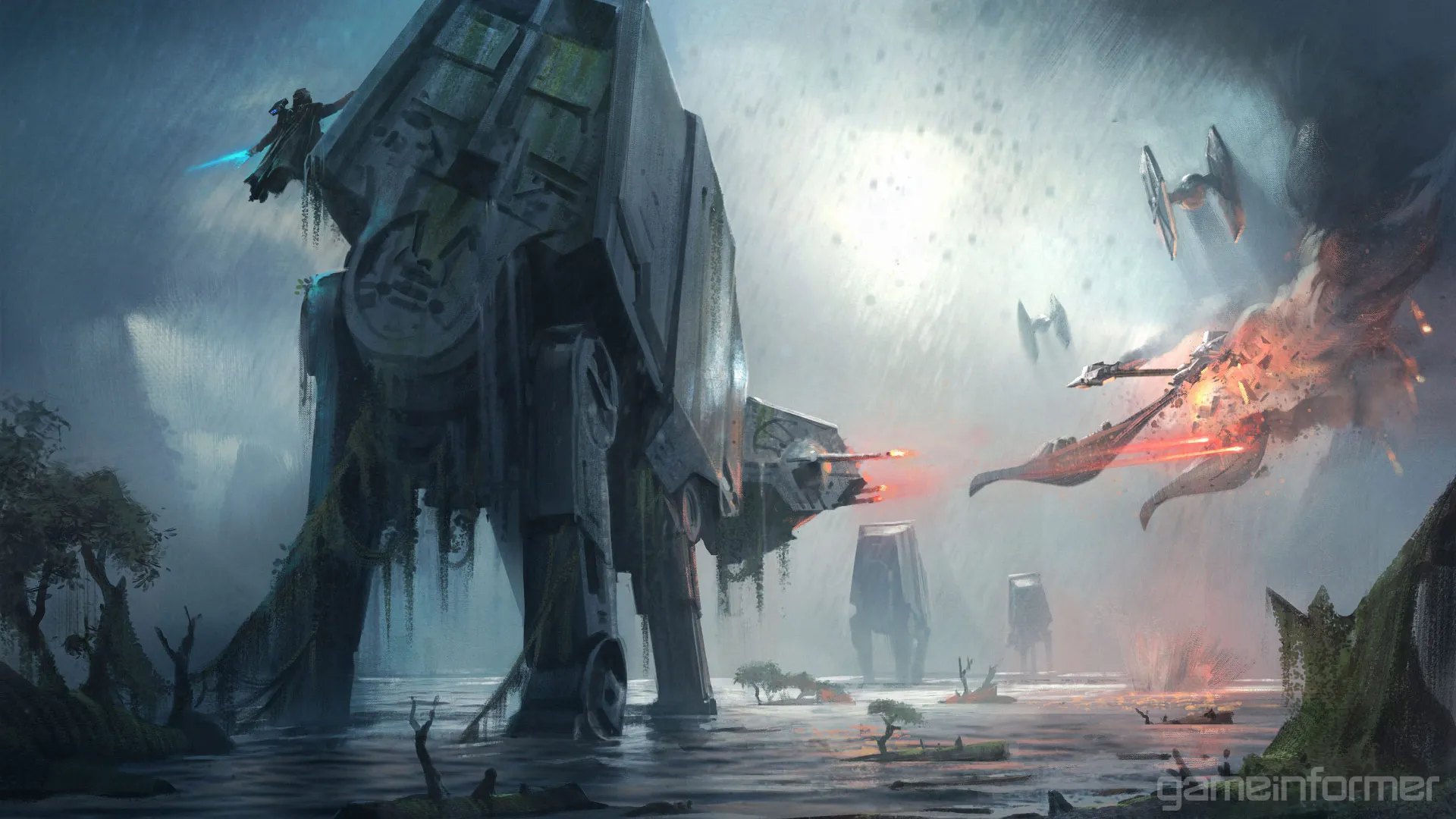
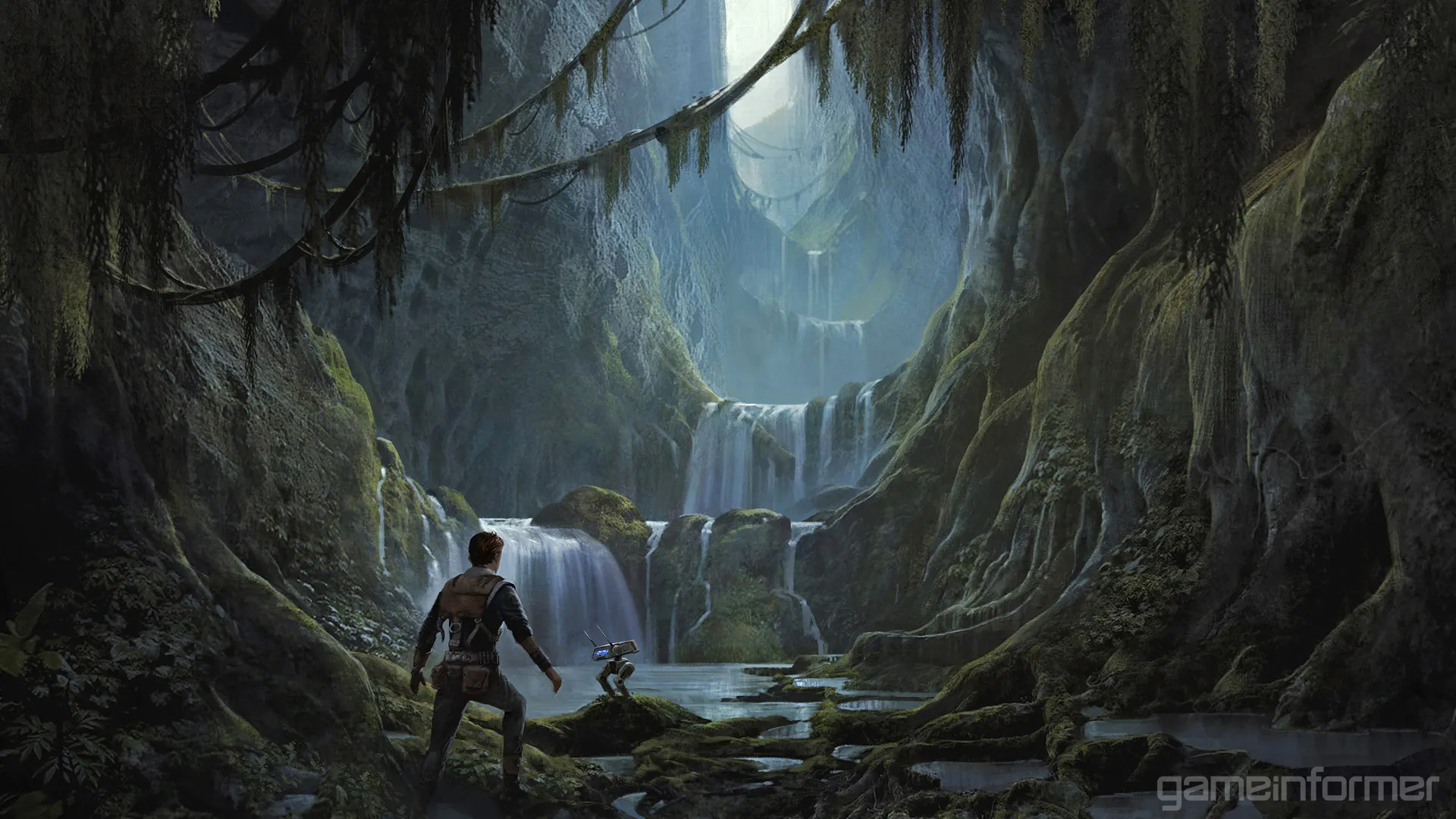
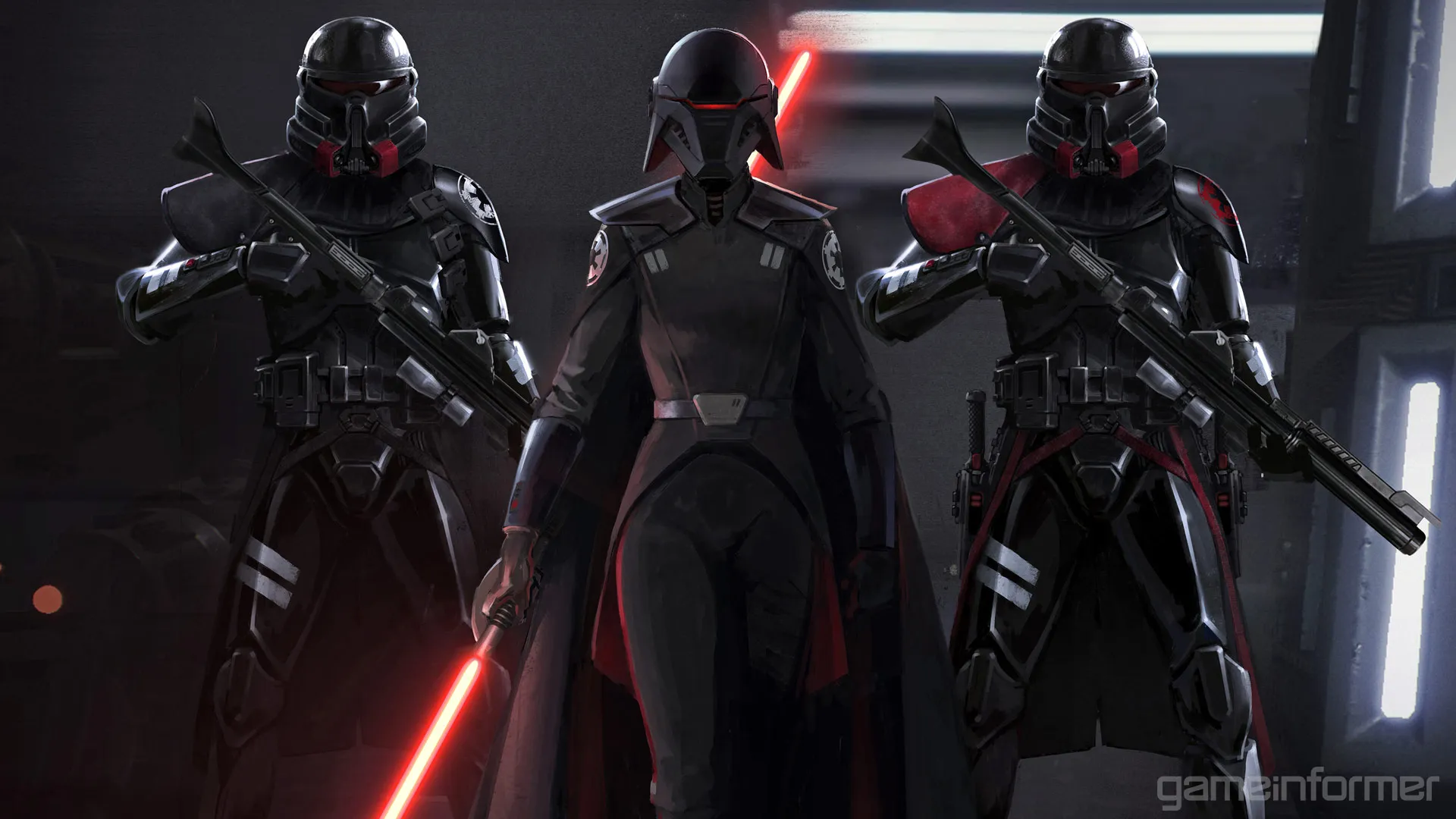
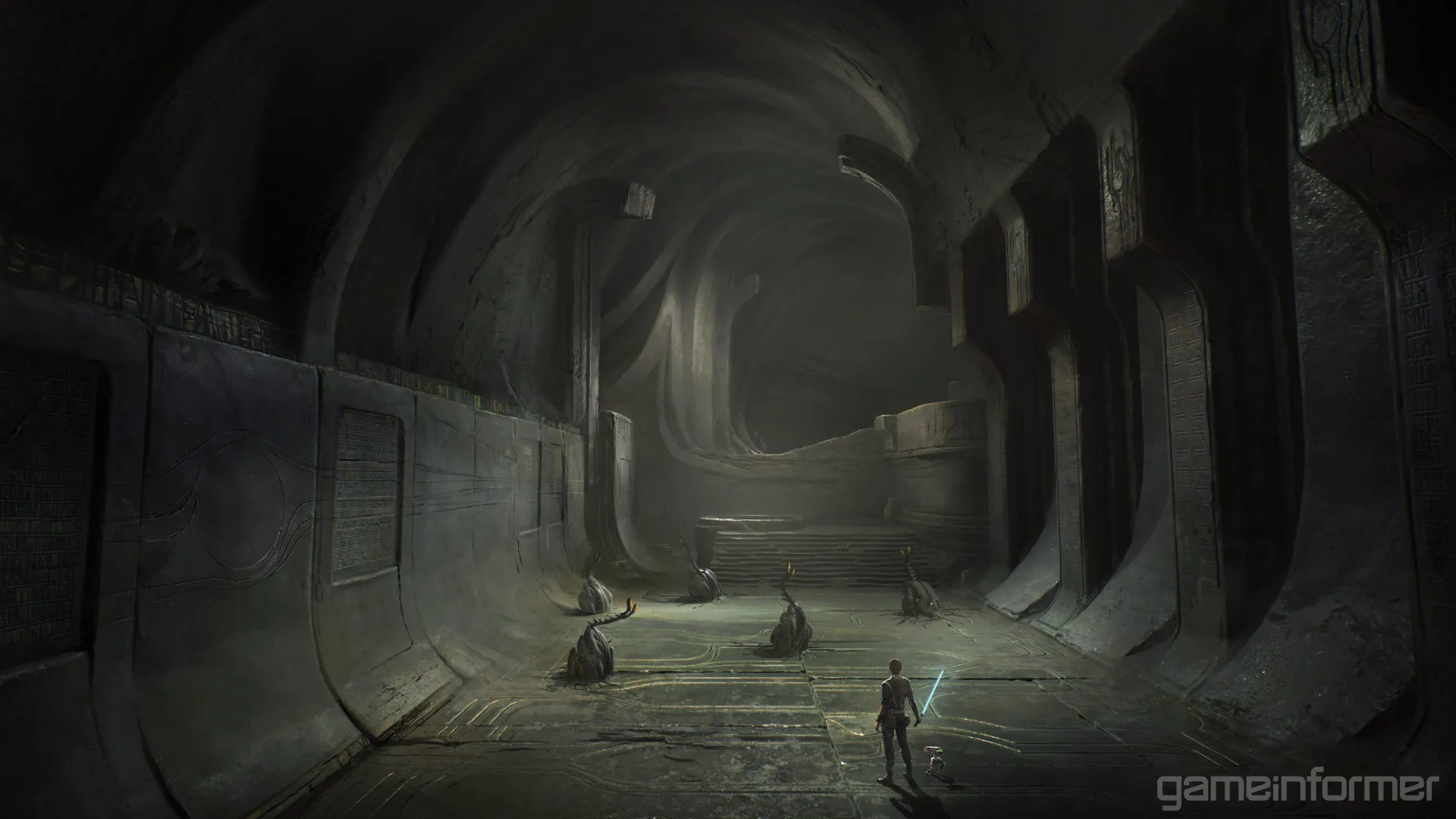
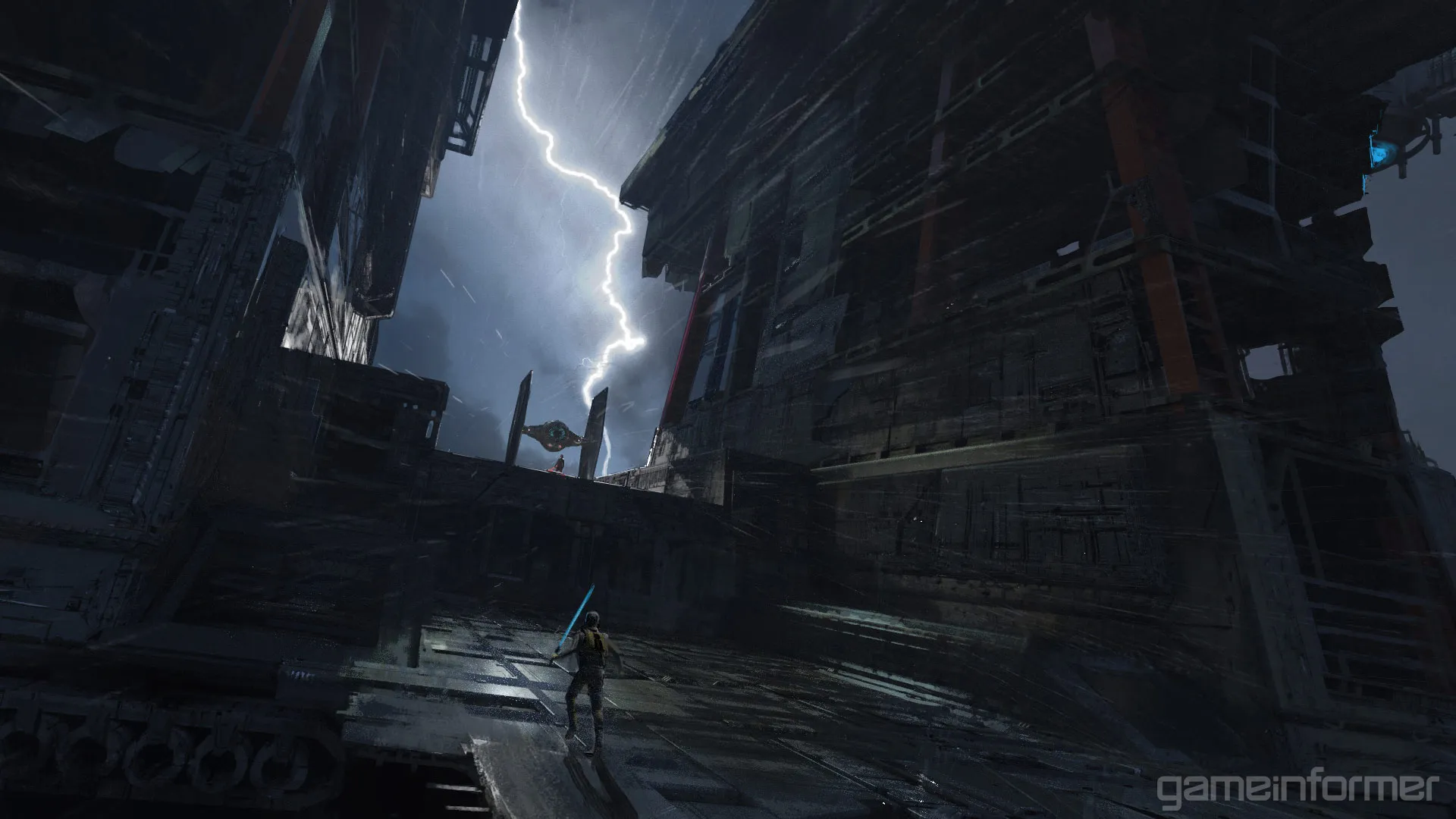
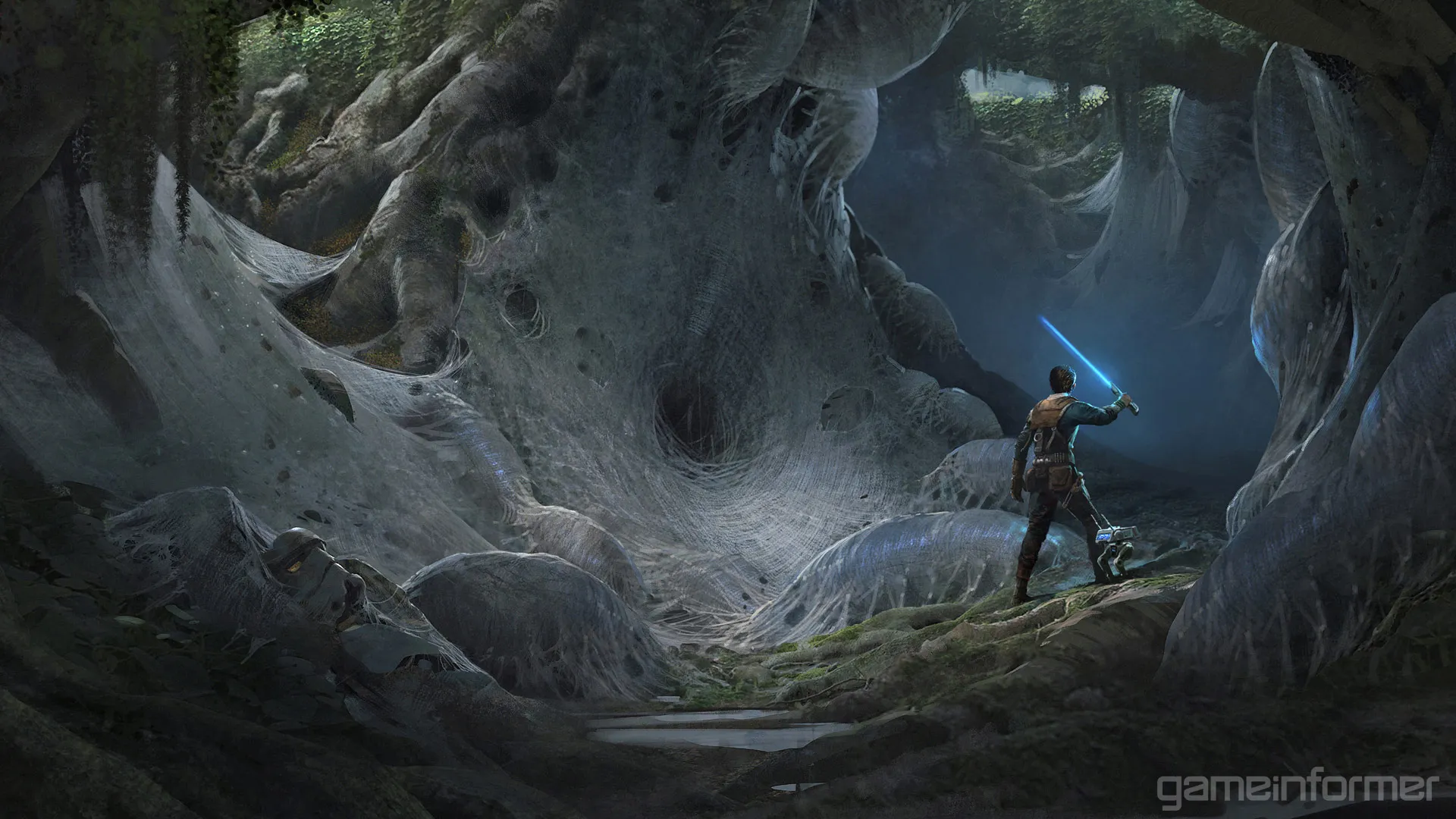






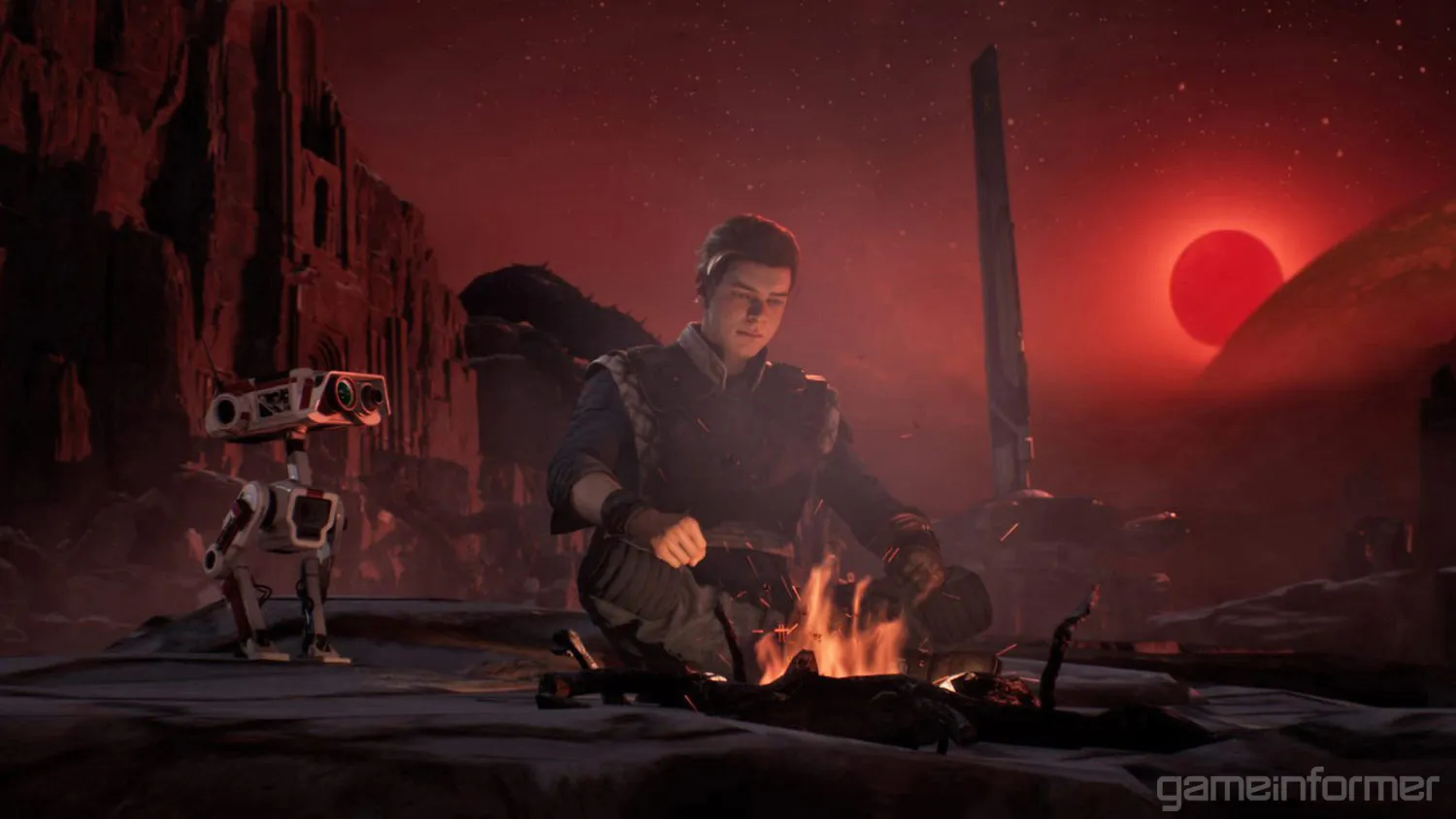

Get the Game Informer Print Edition!
Explore your favorite games in premium print format, delivered to your door.
- 10 issues per year
- Only $4.80 per issue
- Full digital magazine archive access
- Since 1991
